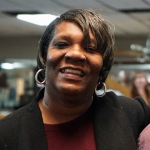Times have changed. The alarm has been struck, and it is declared that for the next few months we are living in a state of emergency. The alarm will persist in the background for months as we try to make sense of our world. For many, our lives have become paralyzed as we wait for announcements and instruction on how we are to continue working. Others continue their commutes to their jobs, as the essential laborers and custodians of our world. For now, many of us are remotely reporting via digital platforms, supervising the structures of a disordered world through virtual windows. As a curator of public programs, I am tasked with the delicate observation of people—understanding their needs, anticipating their questions, and often regulating their movement. It is in the nature (and definition) of this work that I care for all individuals through their experience in artistic environments. In the midst of this emergency, I have observed how institutions have immediately taken action to facilitate programs. I admire the resilience of the arts sector—its agility and improvisation are often pulled off with success, disproportional to anemic budgets with robust audiences. Yet, I am also dismayed that the arts, once again, confronts a different crisis, an unprecedented crisis.
Read More


























